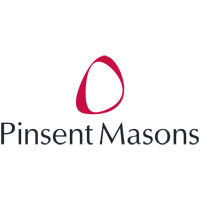

| Barclays







Bob Hoyt
| Barclays
Group chief legal officer | HSBC
Group chief legal officer | HSBC
Banks and professional services | Barclays
Team size: 840 Major law firms used: Addleshaw Goddard, Allen & Overy, Baker McKenzie, Clifford Chance, Dentons, Linklaters, Pinsent Masons, Simmons & Simmons, White & Case ‘You don’t want a...
Team Size: 800
Major legal advisers: Addleshaw Goddard, Allen & Overy, Baker McKenzie, Clifford Chance, Dentons, Linklaters, Pinsent Masons, Simmons & Simmons, White & Case
Few industries have seen more change and scrutiny in the last decade than financial services, triggered by the fallout from the global financial crisis. For Barclays, turbulence, controversies and shifts in strategy have dominated. The bank faced a Serious Fraud Office investigation, a multibillion-dollar settlement with the US Department of Justice and similarly weighty fines for manipulating the forex market. Moreover, ring-fencing reforms saw Barclays in March 2016 split into two divisions: Barclays UK and Barclays International.
The stature of in-house legal teams at financial institutions has simultaneously increased, with Barclays in particular widely considered one of the more forward-thinking and innovative legal departments. Much of this run has been overseen by group general counsel (GC) Bob Hoyt, who joined in 2013.
‘Barclays is the furthest in its development, compared to other teams, because of Hoyt and his leadership, and the unique way the legal team organises itself and its operating model,’ comments one Big Four legal head. ‘He has a level of respect with the board and an autonomy that is unusual in an institution of that size. He is also doing all the things people are talking about when it comes to innovation.’
The most obvious manifestation of this was the banking giant’s final panel review in mid-2018 ahead of a long-planned phasing out of formal reviews by 2021. Alongside Hoyt, operations leaders Stéphanie Hamon (now at Norton Rose Fulbright), Jon Doyle and Alison Gaskins (now at a consulting firm) led on Barclays’ reshaping, generating savings believed to run into the tens of millions of pounds.
‘A big change in recent years is on the new approach to panel management and the way the law firms interact with us,’ Hoyt comments. ‘This includes seeking improvements from our panel of firms, rather than starting over with a new panel; deploying technology to give enhanced transparency; and challenging law firms to partner with us in seeking new ways to work efficiently. Barclays’ efforts in this area have been widely accepted as pioneering across the industry.’
The overarching strategy is to develop the legal professional, and function, of the future. Innovation and modernising legal services to develop better automation, market intelligence and access to information has seen an automated workflow platform deployed across hundreds of internal clients, a web-based knowledge management portal that staff across the bank can access and a contract management approach finalised. An internal competition saw more than 40 submissions from lawyers across the function identify potential work improvements, while the bank has launched an Innovation Consortium, regularly meeting nine of its panel law firms. On the people side, Hoyt also championed the development of the Mindful Business Charter, the mental health and wellbeing initiative (see Philip Aiken, page 90).
‘The pace of change within the financial services sector is more rapid than ever and legal functions need to keep up,’ Hoyt adds. ‘That means having legal professionals who are agile, ready to acquire new skills and excited about using technology to enhance the work they do. If we can do that, we
will keep up with evolving business demands, new products and services, and the complex regulatory environment.’
For Hoyt, keeping up with that pace of change – either digital disruption or changing regulation – presents the biggest challenge. He says that while GCs have traditionally been valued for bringing judgement, perspective and experience to a company, the speed at which business and legal issues change means it is becoming increasingly difficult to strike a balance between relying on experience and being open to new disruptions.
‘For us, this involves the work we are doing to review our target operating models, adding alternative providers to our panel and adopting law tech automation tools. A lot of new tools are being brought to the market and the GC’s role now requires a much stronger understanding of the tools at our disposal so we can deliver the best legal services for the bank with efficiency,’ he continues. ‘Our most-valued colleagues will be those who can use that technology and combine or enhance it with great judgement and experience, a growth mindset and strong communication skills.’